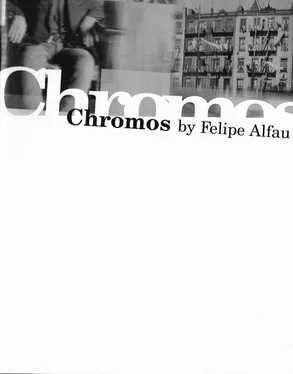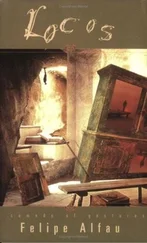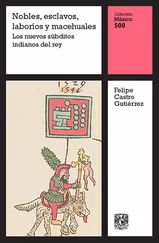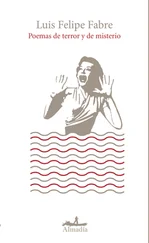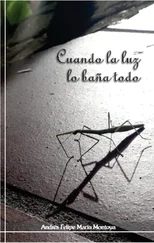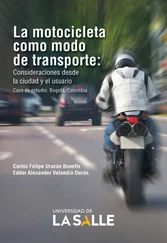The voice of the Moor between Garcia’s and my own head interrupted: “This is a picture, you know? A very good picture symbolizing all dancing that has been and will be, as it should be, but a picture. The others, they were alive, they were an incident, not a generalization. Exactly as I said before: expressive, not interpretive, although one could take it the other way around — of course, the perfect concept may be stated backwards and remain consistent— But no matter, the other two, of course, found dancing in cafétines in Granada or Córdoba, I don’t remember, but not these two. Nothing but the stage all their lives. The others: dark, Gypsies, all fire; but these — look at their color — and no spontaneity — dead. This is the dance of death, a race committing suicide at last. The others were a race burning in a final glorious pyre, they were a bonfire. These are a stone monument erected to the death of a people—” I caught the mind again:
When any countryman was introduced, the usual remarks: “So? The gentleman is a Spaniard? From Spain? Well, yes; I could tell by the face, there is something—”
“—but that is our country: a continuous death. We have been ending since our beginning—”
“—but I thought perhaps Latin American. Your accent, you know? But real Spanish, you say? Well, well; you wouldn’t recognize the place anymore. So many years in this country! Practically a lifetime. Must be quite an American by now.”
“—of course, it is Góngora with something of the humanism and mockery of Quevedo, culteranismo and conceptismo — the national system. The moment of death held and sustained for an eternity. The identity and assertion of a country; not before dying, certainly not after, but exactly at the moment of dying. Puzzling, irritating point; the same thing that worried Newton when endeavoring to explain his fluxions. He must have known the despair that all of our people know. To conceive of something that cannot be explained. To be convinced of the truth of something which on explaining becomes obscure to the alien mind, absurd, full of contradictions, and will always remain unbelievable but convincing—”
It was true. He had lost much of his native accent and mannerisms, but he was a Spaniard and would continue to be one to his death, perhaps more so than the others. Distance and time made it so. One remained less adulterated living in the past, holding the past. His was a people of nostalgia who became more themselves by separation when parting—
“You think they are dancing, but they are not. They are standing still, cast in rhythmic shape upon the fourth perpendicular—”
I desisted. His thoughts clouded and out of the fog came a clear picture of Pinto and La Colombina dancing. He was no longer thinking but paying attention to the dance and then, no more. His face was there, but it was a blank, soft, doughy face.
The dance ended as it had begun, with cool circumspection, and yet at the very end, there was something difficult to define. It was a motion closing the dance that was above all typical and everyday Spanish, that in one instant suggested and condensed everything that Lunarito and Bejarano had done in a whole dance. More than the masters showing the pupils, it had a quality of personal warmth and the quiet gallantry which Pinto had shown throughout the performance suddenly flared in evidence and was never more engaging. Yet, as they left the patio to mix with the others, there was that distant speculation growing like a chasm between those two, and it was interesting to speculate what might have been — I mean, between them. The ice, however, had been broken and they were in the same group.
The Moor took charge again: ‘‘Superlative of course and delightfully artificial, but this is the modern generation of dancers for you, neoclassical and analytic — like comparing some of the modern toreros with Belmonte or Machaco and finding the answer in the old school of Lagartijo to convert safety into the virtue of his half-thrust or the modern adornos and remates. It is the ballet. Too much ballet and too much self-consciousness, but with the capacity to be castizo when one wants to. Did you notice that final step? That was telling the world how it is done; that when they want to, they can be as chulos if not more so than the next one. That was real and cañi. It was the desideratum in alpargatas, but all in all, too artificial and stylized. Even for the modern school, they have gone too far— Wonderful but less and less of Spain, until like the smile of the Cheshire cat—”
Pinto and La Colombina were listening with amusement and the criticism of Don Pedro seemed to bring them closer together, to cast them in the mutual role of misunderstood pioneers who are way ahead of their time and consequently find themselves alone, to enjoy their esotericism, and they began to talk, pleasantly at first and then more intimately. Had it not been for this, they might have parted on that dance floor never to see each other again. I have noticed no decrease with the passing generations in the unyielding pride of the Spaniard and they would have parted with their eloquent figures saying the well-known phrase: “I want and I know that you also want and it would have been wonderful, but it could not be.”
I wouldn’t be surprised if the sly Moor, always the conductor, had brought this about on purpose.
Cáceres had continued to finger his guitar, half plucking, half tuning it. This correction of tuning went on almost continuously, even while he played. It could not have been a reassuring reflex; he was too much of a purist for that. He must have had a remarkable sensitivity to variations of pitch. He looked around smiling while his hands caressed the instrument and his left flew to the pegs and then he bent a little and began to play in earnest.
Spanish music is singularly extra-European, a quality marked to such a degree that it permits even the most unmusical Spaniard to pick it out from any other music of the white race without hesitation. Possibly the one exception is its superficial similarity to southern Russian music, but clearly this would be more a confirmation of the rule than an exception. The fact that this relationship, if it exists, has bypassed Italy is one of those apparent puzzles intended to encourage research and classed by Don Pedro with the other one about the propinquities of northern and southern peoples in various countries.
It is known, or at least maintained, that in most countries the people from the south are easygoing, while the people from the north are industrious, but it so happens that the south of many countries lies north of the north of many other countries; yet the characteristics are maintained within each. This stratified alternation between indolence and activity parallel to the equator is curious indeed and a challenge to the investigating mind, but to get back to the Spanish music: its singularity makes Spaniards feel that it is more their very own than any other nationality can feel about its music. Music in many other countries is a product of culture. They have produced symphonies, operas, chamber and instrumental music of all types and, while these show national traits, they are not very noticeable to the uninitiated. Although Spain has also produced what is loosely termed serious music, what is known as Spanish music, both in Spain and abroad, is essentially popular, traditional and possibly of unrivaled individuality.
It is not continental, whether one refers to the continents of Europe or Africa, because although it enjoys a good deal of Moorish influence, it is a very conditioned Moorish, well digested and assimilated. It is the one music fully developed on white man’s harmony by a European people, which stands apart from all others. Don Pedro claims to entertain the suspicion that this applies not only to music but to the whole of Spain in all other manifestations and that the saying attributed to the French, that Europe ends in the Pyrenees, may be conceded and accepted, but whether as a compliment or otherwise, he has kept a moot point.
Читать дальше
